
When it comes to caring for indoor plants, many people are turning to chemical-free methods that are safe, non-toxic, and organic. These methods utilize natural techniques to nurture plants without relying on synthetic pesticides or harmful chemicals.
Not only do chemical-free indoor plant care methods provide a healthier environment for both you and your plants, but they are also more environmentally friendly.
By opting for chemical-free indoor plant care, you can ensure that your plants thrive without the risk of exposing yourself or your loved ones to harmful substances.
From pest control to specific plant-related issues, there are a variety of non-chemical options available to help you maintain a vibrant and thriving indoor garden.
Key Takeaways:
- Chemical-free indoor plant care methods use natural, non-toxic, and organic techniques to nurture plants without synthetic pesticides or harmful chemicals.
- These methods provide a safer and more environmentally friendly alternative to traditional plant care.
- Non-chemical options for pest control include biological control methods, mechanical techniques, and cultural practices.
- Specific pests like spider mites, aphids, thrips, scale insects, mealybugs, and fungus gnats can be controlled using non-toxic methods.
- Natural insecticides such as insecticidal soap, neem oil, and homemade sprays offer effective and safer alternatives to chemical pesticides.
Pest Control Options for Indoor Plants
When it comes to caring for indoor plants, pest control is a crucial aspect. However, you don’t have to rely on harmful chemicals to keep pests at bay. There are several non-chemical options available that are effective in maintaining the health of your plants.
These methods not only protect your indoor plants but also ensure a safe and non-toxic environment for you and your family.
One natural pest control method is the use of biological controls. This involves introducing predatory mites or insects that feed on the pests infesting your plants.
These beneficial organisms act as natural predators, keeping pest populations in check without the need for chemical intervention. Another option is using mechanical techniques such as washing the plants or using a forceful spray of water to physically remove pests.
Cultural practices also play an important role in pest control for indoor plants. By increasing humidity levels, you can create an environment that is less favorable for pests.
Quarantining new plants can prevent the spread of pests to existing plants. These non-chemical methods are not only effective but also promote a more sustainable and eco-friendly approach to plant care.
Table: Comparison of Pest Control Options for Indoor Plants
| Pest Control Method | Description | Effectiveness |
|---|---|---|
| Biological Controls | Introducing predatory mites or insects to feed on pests | High |
| Mechanical Techniques | Physically removing pests by washing or using water sprays | Moderate |
| Cultural Practices | Increasing humidity and quarantining new plants | Low |
By adopting these non-chemical pest control options, you can effectively protect your indoor plants from pests while maintaining a chemical-free environment.
These methods are not only safer for you and your plants but also contribute to a healthier and more sustainable way of plant care. So, next time you encounter pests in your indoor garden, consider these natural alternatives for a greener and cleaner home.
Spider Mite Control for Indoor Plants
Spider mites can wreak havoc on your indoor plants, but don’t fret. There are effective and non-chemical methods to control these bothersome pests. By using natural spider mite control techniques, you can keep your plants healthy and thriving without resorting to harmful chemicals.
Identifying Spider Mite Infestations
Before diving into spider mite control methods, it’s essential to identify if your plants are infested. Look for signs such as discolored leaves, tiny webs, or small specks resembling dust on the leaves. Once you confirm the presence of spider mites, it’s time to take action.
Non-Chemical Spider Mite Control Options
There are several non-chemical spider mite control options that you can implement. One effective method is applying insecticidal soap or horticultural oil, which suffocates the mites and disrupts their life cycle.
Another option is introducing predatory mites, which feed on spider mites and help keep their population in check. Cultural practices like misting the foliage regularly and quarantining new plants can also help prevent spider mite infestations.
Table: Natural Spider Mite Control Methods
| Control Method | Description |
|---|---|
| Insecticidal Soap or Horticultural Oil | Apply a solution of insecticidal soap or horticultural oil to suffocate and disrupt the spider mite life cycle. |
| Predatory Mites | Introduce predatory mites that feed on spider mites to control their population naturally. |
| Misting the Foliage | Regularly misting the foliage creates a humid environment that discourages spider mite infestations. |
| Quarantining New Plants | Isolate new plants for a few weeks to prevent the spread of spider mites to your existing collection. |
With these natural spider mite control methods, you can maintain healthy indoor plants and enjoy a pest-free environment. Remember to monitor your plants regularly for any signs of spider mites and take immediate action to prevent infestations from spreading.
Aphid Control for Indoor Plants

Aphids can be a common pest that affects indoor plants, but you can effectively control them using non-toxic and eco-friendly methods. By choosing these methods, you can protect your plants from harm while also safeguarding the health of your home environment.
Non-Toxic Aphid Control Methods
There are several non-toxic options for controlling aphids on your indoor plants. These methods are safe to use and do not pose any risk to you, your family, or your pets. Consider the following techniques:
- Insecticidal soap: Using an organic insecticidal soap can effectively eliminate aphids on your plants. Simply spray the soap onto the affected areas, ensuring it covers both the tops and undersides of the leaves. Repeat the application as needed.
- Ladybugs and lacewings: Introducing natural predators like ladybugs or lacewings can help control aphid populations. These beneficial insects feed on aphids, keeping their numbers in check. You can purchase ladybugs or lacewings from reputable garden centers and release them onto your plants.
- Physical removal: For smaller infestations, manually removing aphids by gently wiping them off the leaves with a damp cloth or cotton swab can be effective. Remember to dispose of the aphids in a sealed bag to prevent reinfestation.
Implementing these non-toxic aphid control methods will not only protect your indoor plants but also contribute to a healthier and safer living environment for everyone in your home.
By taking a natural and eco-friendly approach, you can maintain the beauty and vitality of your indoor garden without resorting to harmful chemicals.
| Aphid Control Method | Description |
|---|---|
| Insecticidal soap | Organic soap that kills aphids on contact. Safe for plants, humans, and pets. |
| Ladybugs and lacewings | Natural predators that feed on aphids. Can be purchased and released onto plants. |
| Physical removal | Manually removing aphids from leaves using a damp cloth or cotton swab. |
Conclusion
Controlling aphids on indoor plants can be achieved without the use of toxic chemicals. By employing non-toxic methods such as insecticidal soap, introducing ladybugs or lacewings, and physically removing aphids, you can effectively manage aphid infestations and maintain the health of your plants.
Implementing these eco-friendly techniques not only protects your plants but also promotes a safe and sustainable indoor gardening environment.
Thrip Control for Indoor Plants
| Non-Chemical Thrip Control Methods | Description |
|---|---|
| Insecticidal Soap | Apply a solution of insecticidal soap directly onto the plants to suffocate and kill thrips. |
| Botanical Insecticides | Use natural insecticides made from plant-based ingredients, such as pyrethrin or rotenone, to control thrips. |
| Predatory Mites or Beneficial Insects | Introduce predatory mites, lacewings, or pirate bugs to the indoor environment to feed on and eliminate thrips. |
| Blue Sticky Traps | Place blue sticky traps near infested plants to catch and control adult thrips. |
| Cultural Practices | Mist the plants regularly to increase humidity and create an unfavorable environment for thrips. Flood the greenhouse floors to disrupt thrip breeding sites. |
Thrips can cause damage to your indoor plants, but it is possible to control them using natural methods. These non-chemical thrip control options are effective and sustainable, helping to protect your plants without resorting to harmful chemicals.
Insecticidal soap is a popular choice for thrip control, as it suffocates and kills thrips on contact. Applying a solution of insecticidal soap directly onto the plants can help control the infestation.
Another option is to use botanical insecticides made from plant-based ingredients, such as pyrethrin or rotenone. These natural insecticides are effective against thrips and pose less risk to the environment.
Introducing predatory mites, lacewings, or pirate bugs to the indoor environment can also help control thrips. These beneficial insects feed on thrips, reducing their numbers and preventing further damage to your plants.
Using blue sticky traps near infested plants can help catch and control adult thrips, preventing them from laying eggs and causing more damage.
Implementing cultural practices such as misting the plants to increase humidity and flooding the greenhouse floors can create an unfavorable environment for thrips.
Thrips thrive in dry conditions, so increasing humidity can help deter their population growth. Flooding the greenhouse floors disrupts their breeding sites, preventing their lifecycle from continuing.
Scale Insect Control for Indoor Plants
When it comes to dealing with scale insects on indoor plants, there are effective non-chemical methods that can help you eliminate these pests.
Scale insects can be a common problem, but by using natural control techniques, you can protect your plants without resorting to harmful chemicals.
One option for scale insect control is the use of insecticidal soap or horticultural oil. These natural products suffocate and kill the scale insects, making them a safe and effective solution.
Simply apply the soap or oil according to the manufacturer’s instructions, targeting the areas where the scale insects are present. This can help eliminate the infestation and prevent further damage to your indoor plants.
Another method for controlling scale insects is introducing beneficial parasitic wasps or predators. These natural enemies feed on scale insects and can help keep their population in check.
By releasing these beneficial insects into your indoor environment, you can establish a natural balance and reduce the number of scale insects on your plants.
In addition to these methods, regular monitoring and practicing cultural techniques can also aid in scale insect control. Regularly inspect your plants for signs of infestation, such as sticky residue or discolored leaves.
If you spot scale insects, take immediate action to prevent their spread by misting the foliage, washing the plants with soapy water, and pruning heavily infested parts.
Quarantining new plants and implementing proper hygiene measures can also help prevent scale insects from infesting your indoor environment.
| Non-chemical Scale Insect Control Techniques | Benefits |
|---|---|
| Using insecticidal soap or horticultural oil | – Safe and effective |
| Introducing beneficial parasitic wasps or predators | – Establishes a natural balance |
| Misting the foliage, washing plants with soapy water, and pruning heavily infested parts | – Prevents spread of infestation |
| Quarantining new plants and implementing proper hygiene measures | – Prevents scale insects from infesting indoor environment |
When it comes to scale insect control for indoor plants, using non-chemical methods is a safe and effective approach.
By employing techniques such as insecticidal soap or horticultural oil, introducing natural predators, and practicing cultural measures like misting and pruning, you can eliminate scale insects and protect the health of your indoor plants.
With regular monitoring and proper care, you can maintain a scale-free environment for your indoor plants.
Pest Control Options for Mealybugs

Mealybugs can be a common problem for indoor plants, but there are effective and natural methods to control these pests without relying on chemical treatments. By utilizing non-toxic and organic mealybug control techniques, you can safely protect your plants and maintain a healthy indoor environment.
Effective Non-Chemical Mealybug Control Methods
1. Manual Removal: Inspect your plants regularly and manually remove visible mealybugs with a cotton swab soaked in alcohol. This method helps to eliminate mealybugs without introducing any harmful chemicals to your plants.
2. Insecticidal Soap: Apply a solution of insecticidal soap to control mealybugs. This organic spray suffocates and kills the pests on contact, making it an effective method for eliminating mealybugs from your indoor plants.
3. Natural Predators: Introduce natural enemies such as ladybugs, lacewings, or predatory mites to your indoor garden. These beneficial insects feed on mealybugs, helping to control their population naturally.
Implementing Cultural Practices
Aside from specific control methods, adopting certain cultural practices can also help prevent and manage mealybug infestations:
- Quarantine: When bringing new plants into your home, isolate them for a few weeks to ensure they are free from pests like mealybugs before introducing them to your existing collection.
- Moderate Fertilization: Avoid over-fertilizing your indoor plants, as excessive nitrogen can attract mealybugs. Follow appropriate fertilization guidelines to maintain healthy plant growth.
| Non-Chemical Mealybug Control Methods | Advantages |
|---|---|
| Manual Removal | – No harmful chemicals – Targeted approach |
| Insecticidal Soap | – Effective on contact – Safe for plants and environment |
| Natural Predators | – Sustainable control method – Reduces the need for chemical intervention |
By using natural mealybug control methods and implementing cultural practices, you can effectively manage and prevent mealybug infestations, ensuring the health and vitality of your indoor plant collection.
Fungus Gnat Control for Indoor Plants
Fungus gnats can be a nuisance for indoor plants, but there are non-toxic and eco-friendly methods to control them. These tiny flying insects are attracted to moist soil and can cause damage to the roots of your plants. Here are some effective ways to manage fungus gnats without the use of harmful chemicals:
1. Traps with Apple Cider Vinegar or Red Wine
Set up traps using apple cider vinegar or red wine to attract and trap adult fungus gnats. Simply place a small amount of vinegar or wine in a shallow dish and cover it with plastic wrap. Poke a few small holes in the plastic wrap to allow the gnats to enter. The gnats will be attracted to the scent, fly into the dish, and get trapped.
2. Neem Oil as a Natural Pesticide
Neem oil is a botanical insecticide derived from the neem tree, and it can be used to control fungus gnats. Dilute the neem oil according to the manufacturer’s instructions and apply it to the soil of your plants. The oil will disrupt the insects’ life cycle and prevent them from reproducing.
3. Diatomaceous Earth
Diatomaceous earth is a natural substance that is made from the fossilized remains of small aquatic organisms called diatoms. Sprinkle a layer of diatomaceous earth on the top layer of soil in your pots. The sharp edges of the diatoms will cut the bodies of the fungus gnats, eventually causing them to dehydrate and die.
4. Yellow Sticky Traps
Yellow sticky traps are adhesive traps that attract and catch flying insects. Hang the traps near your plants, making sure they are positioned at the plant’s level. The bright yellow color will attract the fungus gnats, and once they land on the sticky surface, they won’t be able to escape.
By implementing these non-toxic and eco-friendly methods, you can effectively control fungus gnats and protect your indoor plants. Remember to monitor the infestation regularly and adjust your control methods as needed.
| Control Method | Effectiveness | Ease of Use | Cost |
|---|---|---|---|
| Traps with Apple Cider Vinegar or Red Wine | High | Easy | Low |
| Neem Oil as a Natural Pesticide | Medium | Moderate | Medium |
| Diatomaceous Earth | High | Easy | Low |
| Yellow Sticky Traps | Medium | Easy | Low |
Natural Insecticides for Indoor Plants
As an advocate for non-chemical pest control methods, I am excited to share with you some natural insecticides that you can use to keep your indoor plants healthy and pest-free. These alternatives to chemical pesticides are not only effective but also environmentally friendly.
One of the simplest natural insecticides you can make at home is a mild liquid soap spray. Mix a few drops of mild liquid soap with water in a spray bottle and use it to coat the leaves and stems of your plants. This solution suffocates insects like aphids and spider mites, effectively controlling their populations.
Another natural insecticide option is rubbing alcohol. Dilute rubbing alcohol with water and use a cotton swab to apply it directly to the insects. This method works well for mealybugs and scale insects, which can be difficult to remove by other means.
Neem oil is a popular organic insecticide that works against a wide range of pests. It disrupts the insects’ hormonal systems, making it difficult for them to feed and reproduce. Dilute neem oil with water and spray it onto your plants, ensuring thorough coverage of both the top and bottom sides of the leaves.
In addition to homemade sprays, you can also make a garlic oil spray for pest control. Crush a few cloves of garlic and soak them in mineral oil overnight. Strain the mixture and dilute it with water before spraying it onto your plants. Garlic oil acts as a repellent, keeping many common pests at bay.
To conclude, using natural insecticides is a safe and effective way to protect your indoor plants from pests without resorting to chemical pesticides. These non-chemical pest control methods support a healthier environment for both you and your plants, helping to maintain a thriving indoor garden.
FAQ
What are chemical-free indoor plant care methods?
Chemical-free indoor plant care methods refer to the use of natural, non-toxic, and organic techniques to nurture indoor plants without the use of synthetic pesticides or harmful chemicals. These methods are a safer and more environmentally friendly way to care for your plants.
What are some pest control options for indoor plants?
Some non-chemical pest control options for indoor plants include biological control methods like releasing predatory mites or insects, using mechanical techniques such as washing the plants or using a forceful spray of water, and implementing cultural practices like increasing humidity and quarantining new plants.
How can I control spider mites without using chemicals?
Some non-chemical options for spider mite control include applying insecticidal soap or horticultural oil, using sulfur sprays or dusts (in a greenhouse setting), introducing predatory mites, and implementing cultural practices like misting the foliage and quarantining new plants.
How can I control aphids without using toxic methods?
Some options for aphid control without chemicals include using insecticidal soap or botanical insecticides, introducing natural predators like green lacewings or lady beetles, washing the plants with soapy water, and practicing cultural techniques like quarantine and moderate fertilization.
What are some non-chemical methods for thrip control?
Some non-chemical thrip control options include applying insecticidal soap or botanical insecticides, introducing predatory mites or beneficial insects like lacewings or pirate bugs, using blue sticky traps, and implementing cultural practices like misting the plants and flooding the greenhouse floors.
How can I control scale insects without using chemicals?
Some non-chemical options for scale insect control include applying insecticidal soap or horticultural oil, introducing beneficial parasitic wasps or predators, washing the plants with soapy water, pruning heavily infested parts, and practicing cultural techniques like misting and quarantine.
What are some natural methods for mealybug control for indoor plants?
Some non-chemical mealybug control options include using alcohol-soaked cotton swabs to remove the insects, applying insecticidal soap or horticultural oil, introducing natural enemies like lady beetles or lacewings, washing the plants with soapy water, and practicing cultural techniques like quarantine and moderate fertilization.
How can I control fungus gnats without using toxic chemicals?
Some non-chemical options for fungus gnat control include setting up traps with apple cider vinegar or red wine, using neem oil as a natural pesticide, applying diatomaceous earth to the soil, and utilizing yellow sticky traps to catch adult gnats.
What natural insecticides can I use for indoor plants?
There are various natural insecticides that you can use for indoor plants, including homemade bug sprays with mild liquid soap or organic insecticidal soap, using rubbing alcohol to kill and remove insects, applying neem oil as a natural pesticide, making garlic oil spray for pest control, and creating a simple soap spray solution. These natural insecticides are effective and safer alternatives to chemical pesticides.

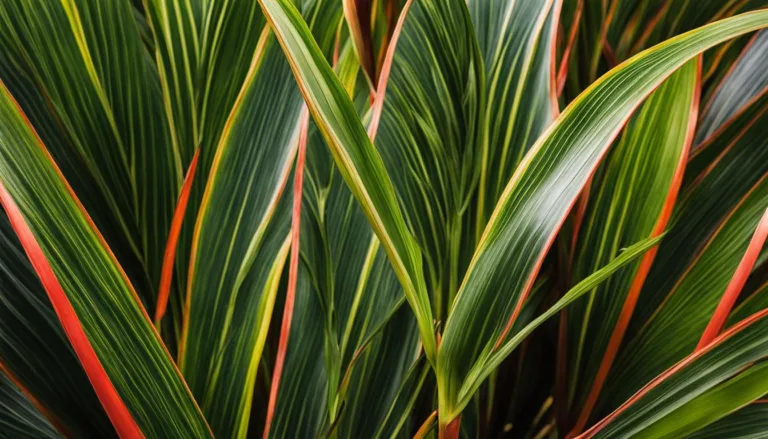
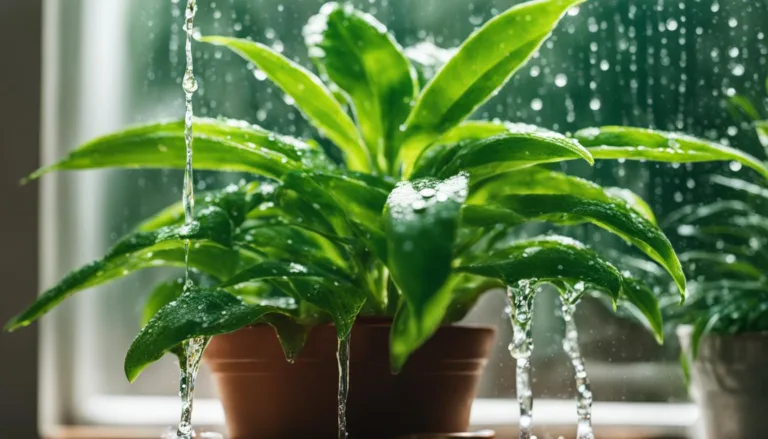

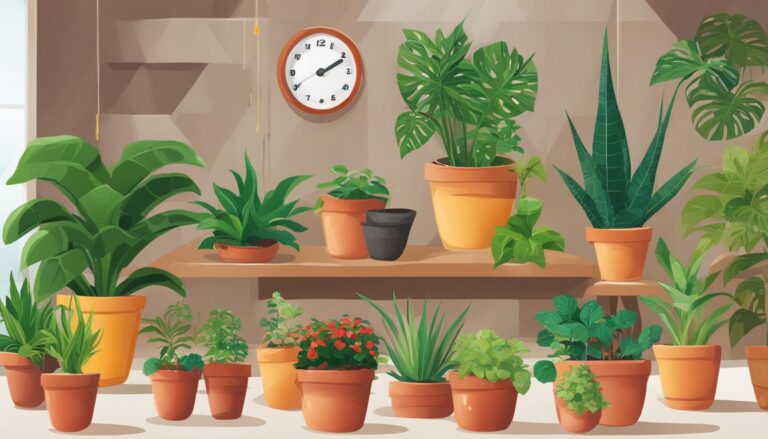
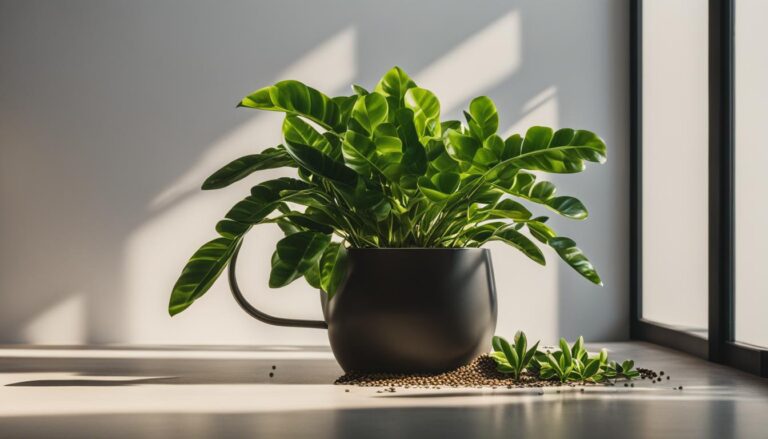
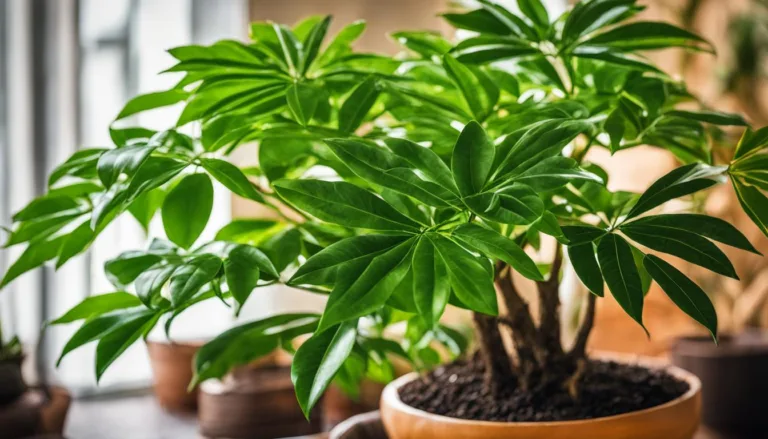
2 Comments
Comments are closed.